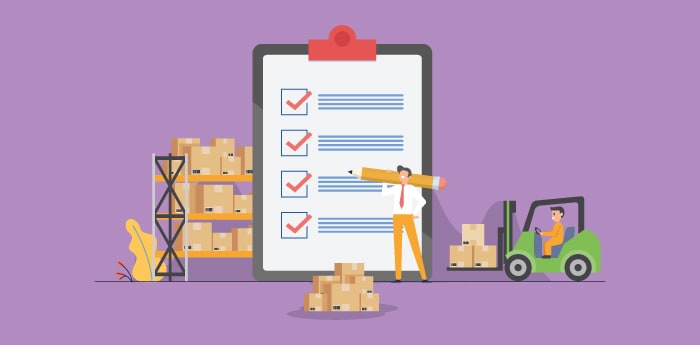
Assets are important for organizations in order to run their business efficiently. Then there are other organizations as well which provide assets to other organizations on lease.
When an organization is equipped with a lot of assets then it becomes hectic to track them down. Not just for tracking, you also need to know that which asset needs to be returned when. So that, you can keep track of proper assets. These scenarios occur when asset verification is not regularly!
What is the need for asset verification?
There are many reasons why asset verification is necessary that we have discussed below:
- For avoiding asset loss – When you send assets on the lease or when some employee takes an asset you need to keep proper track of the asset. Otherwise, your business will suffer huge losses. Sometimes organizations forget to give back assets as a result asset physically does not exist. This is why you need to do asset verification at regular internal not just that it is important that you keep track of assets. It directly impacts the bottom line.
- To check condition – When you provide an asset on the lease or to the employee you need to keep precise information about the asset such as if it working properly and so on. So that, you can check asset condition again. If it is in bad condition you can cut the amount from the security fund. But getting the information at the required time is hectic especially when you are maintaining information on papers.
- Helpful in audit procedures – Audit is very important for organizations and they are inevitable that is why you need to prepare for an audit. An audit can be done externally or internally. When it is done internally it allows you to prepare for an external audit it lets you know the shortcoming of the organization and in which areas you need to comply as per the government rules and policies. If asset verification is not done and the wrong value is evaluated then you will end up paying a huge amount of fine in external audit.
- Identify ghost assets – With asset verification you can identify those assets which are mentioned in the accounts book but physically they are not available. As a result, it not only leads to paying extra tax but in an external audit it affects negatively. Furthermore, you would pay an extra premium for insurance. It does not end here, wrong asset reporting leading to violating regulatory compliance rules. That is why it is essential to identify ghost assets and that can be achieved with asset verification. Once you identify ghost asset you need to ensure that remove them from your records in the right way otherwise it will not be effective.
- Asset theft – Asset theft has always been a big issue. According to a blog, “Over the 2004 to 2014 period an estimated $51.2 million of heavy plant, equipment and vehicles were stolen from businesses. And plant theft from construction sites including more portable plants such as compressors and generators costs Australian companies $140 million every year.” This data shows how the business suffers from loss due to theft. It is one of the main reasons why we need to verify assets regularly.
What is the solution?
Asset management software allows you to keep track of all your assets. You can set alerts and notifications to remind yourself about asset returns. Furthermore, you can keep track of assets with the check in checkout feature. This feature is mainly used in an organization for the employees. When an employee takes assets and when they will return them. With check in check out feature, you can know which employee has which asset and when it will be returned.
With asset tracking, you can not only keep track of assets but you can also avoid asset theft. We know asset theft is a big issue in all industries.
Asset tracking keeps data secured. Furthermore, when you can keep track of assets then your asset loss will not happen and ghost assets will not occur. As a result, your business will comply with rules, and ghost assets will not affect the bottom line.
Asset tracking also helps in the audit process. Usually, audit procedures are really long and exhausted because assets such as vehicles are at different places. So, asset tracking techniques such as Barcode, QR Code, RFID (Radio-frequency Identification), NFC (Near field communication) are used for knowing the accurate location. They are helpful in asset verification.
This software also has the potential to save information that can be used when the asset is returned to cross check the condition of the asset.
Conclusion – Asset verification is very important activity that all business must conduct in order to save unnecessary expenses. As we know assets loss or asset misplacement leads to several consequences such as need to purchase new asset or productivity suffers etc.
Asset management software provides several benefits to an organization asset verification is one of them. There is no doubt that asset tracking software has the potential to take your business to another level.
Frequently Asked Question (FAQs)
-
How does the auditor verify physical assets & what is the need for physical verification?
For verifying physical assets, auditors check the physical asset after that all legal documents such as vehicle papers (to know purchase date), RC (Registration certificate), insurance papers, etc. are checked. This is done to cross-check condition of the asset matches with its paper or not. The need for physical verification of assets is helpful in understanding the actual and worth value of the organization. So that records are clean and transparent for investors.
-
Why audit are long procedures?
In order to understand why audit procedures are long, you have to understand assets are of two types movable and immovable. Immovable assets (generators, computers, etc.) are easy to verify and are available all the time. Whereas movable assets (vehicle, equipment) are not available all the time as they are used to deliver products to customers or equipment are at the working location.
So, auditors have to wait for the moveable asset to return to the organization in order to verify assets that is why audits are a long procedure.




